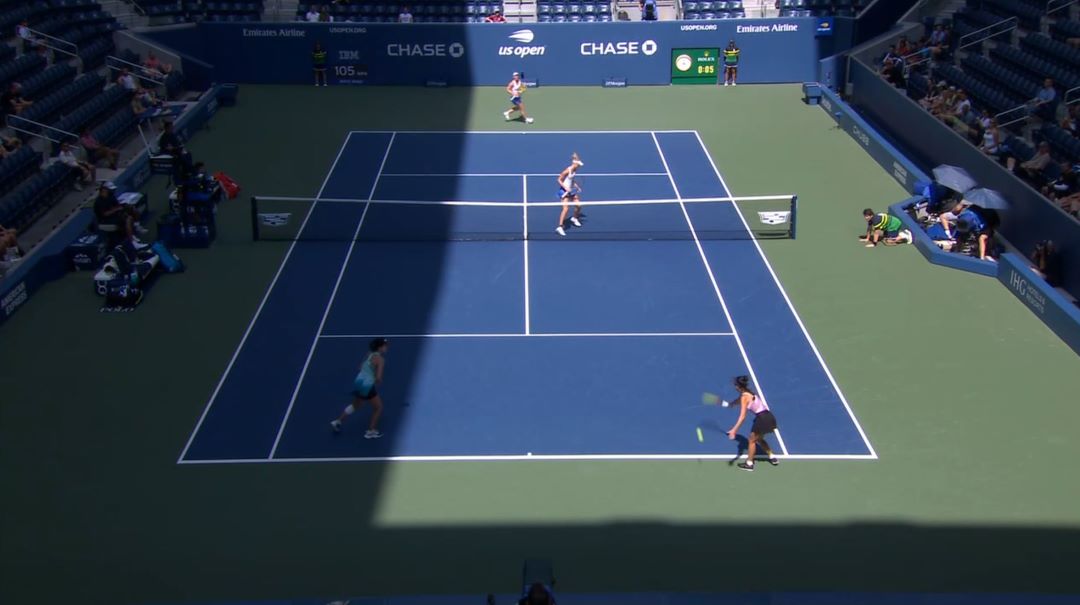In the Junior tennis world, tournaments are the dominant form of competition. That has created a culture where players are expected to pursue ever-improving performance levels. From the USTA perspective, that is an absolute priority. Junior tennis fuels the pipeline that feeds into the USTA player development program. Without strong players, the performance of the United States at International team competitions would suffer. In fact, the USTA is under immense pressure to continuously produce the next generation of great American players.
Unless something has changed dramatically since my daughter aged out of Junior tennis about eight years ago, the USTA does absolutely nothing to retain players crossing the threshold of their 18th birthday unless they are in the player development program or heading off to collegiate tennis. The “Tennis On Campus” program is the only true exception to that statement. Unfortunately, it isn’t truly impactful outside of a handful of places. Additionally, that program doesn’t feed into adult tennis in any meaningful way. It basically just temporarily delays the exit of a subset of players from USTA engagement.
Yesterday, I alluded that there are multiple cultures that need to be healthy for the Adult tennis ecosystem to thrive. While tournaments are a vital part of that, there are a lot of other cultures in tennis that are also important. As the playing population matures, more nuance and variability are needed in the products and services that effectively deliver tennis to a diverse participant base.
In fact, it is pretty common for adults to participate to some degree in multiple forms of tennis and thus to also engage with those multiple cultures. Occasionally, someone will accuse me of harboring elitist attitudes for my advocacy of tournament tennis. However, in addition to tournaments, I have recently also played in USTA League, attended drills, glad-handed at a tennis social, and played some casual fun matches with my friends.
Each of those forms of engagement is needed for tennis to thrive. There will always be some players who primarily participate in only one format and culture of the sport, and that is perfectly fine. However, it is an issue if all those forms aren’t available. This is what has essentially happened with open tennis for the 20 and 30-year-old demographics. Because tournaments don’t exist, the other subcultures of tennis are also struggling with that segment of the population.
Tournaments are a vital competitive outlet for players who either desire or have already achieved a higher level of performance than everybody else in their playing area. People who are squeezed out of local leagues essentially have no place to play. That incentivizes them to manage their ratings, creating a cascading series of similar bad behavior in other League participants. I won’t go as far as to say that if tournaments were healthier, that USTA League culture would be better, but it actually might.
Revitalizing tournament participation in the 20 to 30-year-old demographic would be extremely beneficial for Adult tennis at every level. As I mentioned yesterday, I have an idea that could possibly do just that very quickly. I think it’s worth running a one-year experiment to test out the theory.
The USTA Texas Masters should offer prize money to the winners of the men’s and women’s Open Singles divisions. I am thinking somewhere in the neighborhood of $1000 to $5000.
Hear me out. This relatively small investment will instantaneously generate a lot of interest for high-level players to compete in the Masters. However, only the top 8 ranked players are accepted into that tournament. That means every person who wants to compete for the Master’s prize must participate in at least one other tournament, and most likely do pretty well there. If even a dozen players start competing for those spots, other tournaments will benefit from the initiative.
Experimenting with prize money for one year is considerably less expensive than an ambitious multi-year programmatic initiative. Additionally, it will be apparent within the first year if the effort was successful or not, and it is very easy to discontinue if it didn’t produce the desired results.
Unlike some of my other crazy ideas, I am dead serious about this one.




I am not sure tournament play is the answer to increasing participation. Accommodation costs and sizeable entry fees in senior tournaments are an issue. Increasing the purse doesn’t seem to be a factor in the senior tournaments I have been associated with. Winners and finalists are usually not aware of the size of the prize money. If players can afford the costs of playing in a tournament, unless the winnings are really large, it doesn’t appear to matter. Senior players would not usually enter a tournament in the hope of balancing out their expenditure with winnings.
The trouble with the usual USTA tournament is the very nature of the competition. In a full draw, half of the players are knocked out in the first round and at a recent tournament I was officiating at, almost 50% of feed-in consolation matches went uncontested as players simply dd not show up. The USTA recently changed the regulations so that consolation events can no longer be organized to best accommodate those players who want to play in the consolation event. Players can no longer be moved in consolation events resulting in unbalanced events and days without playing. Lots of players will not play a consolation event for this reason and it only takes traveling several miles to a location only for the opponent not to turn up to become disillusioned with tournament play.
With league play, at least a player knows they are going to play at the end of a journey.
I understand ALTA in Atlanta has thriving leagues and around Sarasota, Florida we have thriving, no USTA, age-based leagues where different ages ranges play on different days of the week for an 18 week season. This is filling a need the USTA is not attempting to.
I would put forth that tournaments are not appealing to many adults (even those who are working to improve their games!) because they aren’t willing or able to block out entire weekends to play. Additionally, for those of us who are a bit older, playing four or five matches in one weekend is tough on our bodies. Leagues are appealing because schedules are more predictable and matches are less concentrated.
Those are all great points. Also, there certainly are USTA League players who are trying to be the best they can be. The point I am trying to make this weekend is that one tennis format (and consequently culture) dominates everything else and that isn’t healthy.
If the USTA weren’t so protective of their brand to the detriment of all others, UTR tournaments would fit this situation perfectly. And yes, prize money makes a difference to this 20-30 year old group.